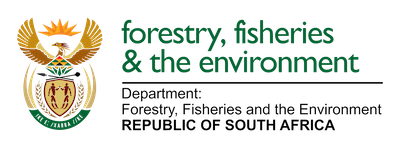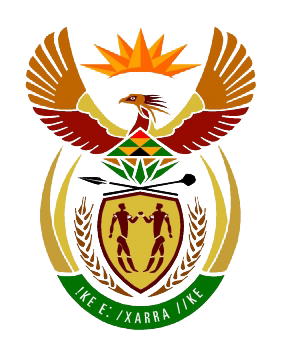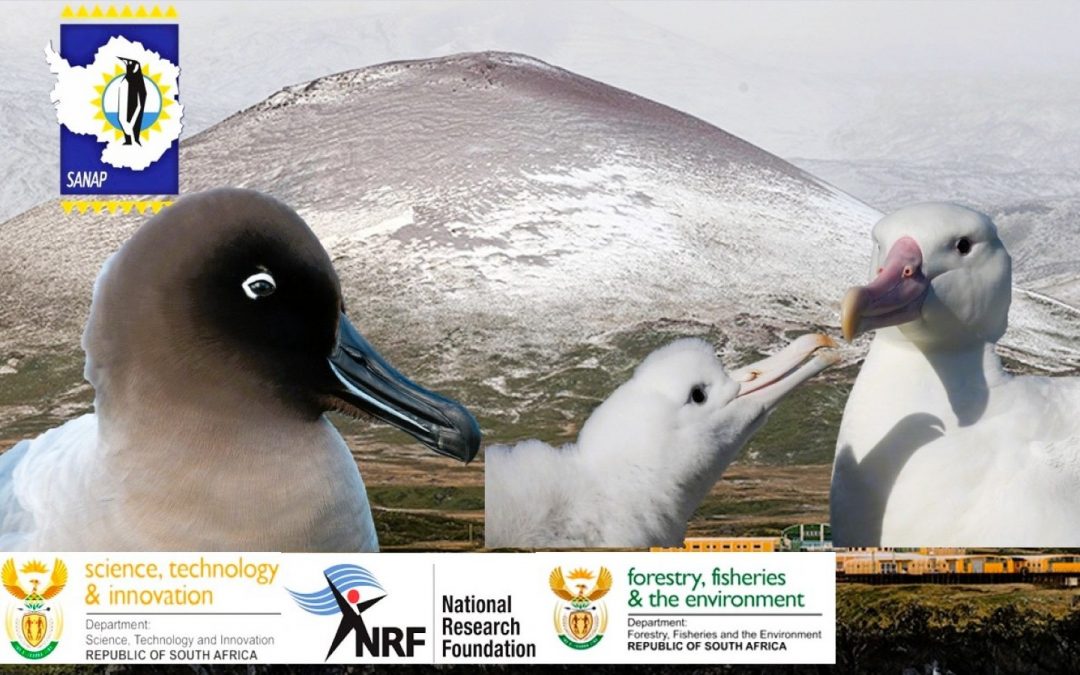
by Fishgate@sanap | Mar 31, 2025 | Announcement, Marion Island, News, SANAP
High Pathogenicity Avian Influenza (H5n1) confirmed on Subantarctic Marion Island
Press Release by the Department of Forestry Fisheries and the Environment: 23 March 2025
The presence of high pathogenicity avian influenza (HPAI) H5N1 virus on Marion Island has been confirmed. Samples collected between September and December 2024 were all shipped back to mainland South Africa, via the SA Agulhas II, in February 2025. In March, Polymerase Chain Reaction (PCR) testing confirmed infection in six bird species, comprising Wandering Albatross (Diomedea exulans), King Penguin (Aptenodytes patagonicus), Brown (Subantarctic) Skua (Stercorarius antarcticus), Southern Giant Petrel (Macronectes giganteus), Northern Giant Petrel (M. halli) and Sooty Albatross (Phoebetria fusca).
Following an initial suspected HPAI case in a Brown Skua at Marion Island (a bird showing clinical signs of HPAI infection including twitching and tremors) in mid-September 2024, more similar cases were reported in early November and mortalities in multiple species have continued into March 2025, though the overall death rate slowed significantly in January. The reduced mortality rate is promising, but 31 bird species breed on Marion Island and the bird species and age composition varies throughout the year, therefore it is difficult to predict how the outbreak will progress. The potential effects on marine mammals are also of concern but no increased mortality has been reported in any mammal species so far.
Among Wandering Albatrosses, chicks were mostly affected, with at least 150 of approximately 1900 chicks from the 2024 cohort having died. However, adults have been affected worst in other species: at least 80 adult Brown Skuas, and approximately 120 adult King Penguins. Much smaller numbers of affected giant petrels (at least 20 Southern and four Northern) and Sooty Albatrosses (five) have been observed. The deaths of adult seabirds are of greater concern than chicks, because most species only start to breed at 3 to 10 years of age, and most affected species raise at most one chick per year. There are also a multitude of other threats to seabirds, including fisheries bycatch, climate change, plastic pollution and predation by introduced house mice on Marion Island.
Marion Island, along with neighbouring Prince Edward Island, provides critical breeding and moulting grounds for millions of seabirds and marine mammals, including nearly half of the worlds Wandering Albatrosses, hundreds of thousands of penguins, and large numbers of Southern Elephant Seals and Subantarctic and Antarctic Fur Seals. The Archipelago is located in the south western Indian Ocean, about 2000km southeast of Cape Town and halfway between Africa and Antarctica.
Observations of and laboratory test results for HPAI (H5N1) on Marion Island can assist in inferring the potential risk to animals on Prince Edward Island, since they share various ecological characteristics. Visits to Prince Edward Island are limited to one visit every four years, to limit human impacts on the island and preserve its pristine state, and the last survey was undertaken in November 2023.
Having spread around the globe since 2021, HPAI (H5N1) was detected in seabirds and marine mammals in South Georgia, southeast of South America, in October 2023. It reached the Antarctic Peninsula in February 2024 and was detected at the French archipelagos of Crozet and Kerguelen (950 and 2300 km east of Marion respectively) in October and November 2024. The virus can be transported long distances by migrating birds, and the virus moved from South Georgia to the French islands.
The situation on Marion Island is being closely monitored by the field personnel overwintering on the island, who have been trained to recognise possible HPAI signs in birds and seals, and in the necessary monitoring and mitigation methods. They will continue to take all precautions to ensure they do not spread the virus. There are few other disease mitigation tools available in this type of situation.
The HPAI protocol [SANAP Protocol for the Management of Avian Influenza (20 April 2024) PDF – 960.4 KB] that has been implemented on Marion Island was developed by the Department of Forestry, Fisheries and the Environment, the management authority for the Prince Edward Islands, together with Western Cape Veterinary Services, marine ornithologists, marine mammal biologists, disease experts and colleagues overseas with similar experience. Efforts to monitor and hopefully limit the spread of the virus on the island will continue.
For media enquiries please contact:
Thobile Zulu-Molobi
Mobile: +27 82 513 7154
E-mail: tmolobi@dffe.gov.za
or
Peter Mbelengwa:
Mobile: +27 82 611 8197
E-mail: pmbelengwa@dffe.gov.za
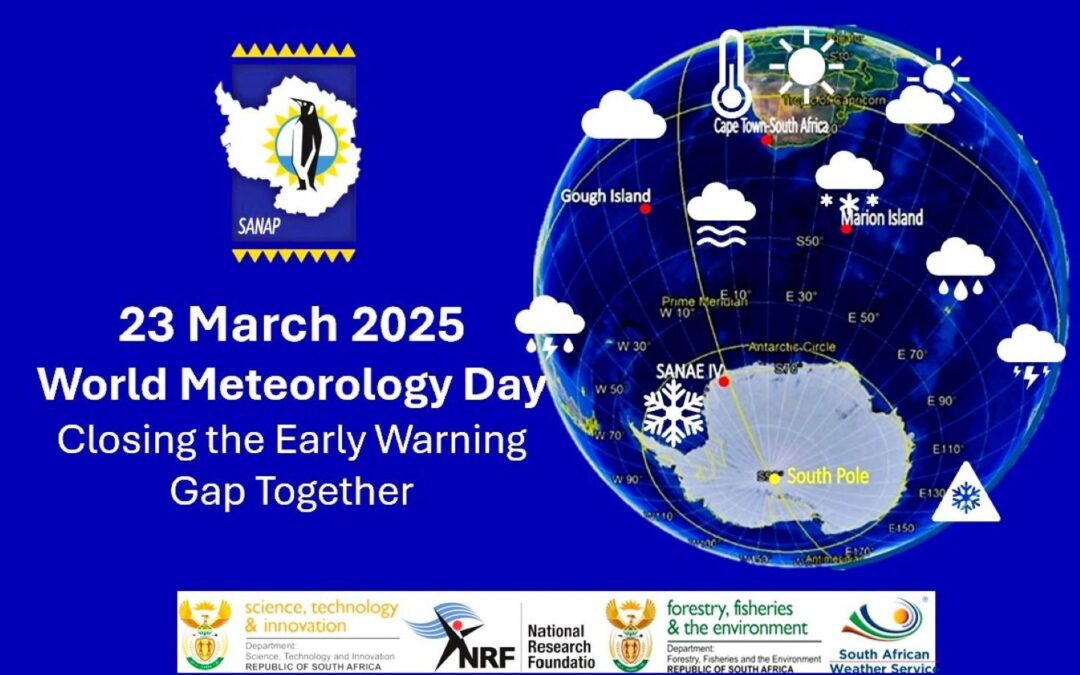
by Ria Olivier | Mar 23, 2025 | Antarctica, Gough Island, International Days, Marion Island, Meteorology, Overwintering Team, Research

 Each year, on March 23rd, the global community observes World Meteorological Day, commemorating the establishment of the World Meteorological Organization (WMO) in 1950. This day highlights the pivotal role meteorology plays in ensuring the safety and well-being of societies worldwide. In 2025, we focus on the indispensable contributions of meteorologists stationed at the South African National Antarctic Programme’s (SANAP) remote research stations: SANAE IV in Antarctica, Marion Island, and Gough Island.
Each year, on March 23rd, the global community observes World Meteorological Day, commemorating the establishment of the World Meteorological Organization (WMO) in 1950. This day highlights the pivotal role meteorology plays in ensuring the safety and well-being of societies worldwide. In 2025, we focus on the indispensable contributions of meteorologists stationed at the South African National Antarctic Programme’s (SANAP) remote research stations: SANAE IV in Antarctica, Marion Island, and Gough Island.
 On this World Meteorological Day, we extend our gratitude to the meteorologists of SANAP’s overwintering teams. Their unwavering commitment and resilience in some of the most challenging environments ensure that we continue to deepen our understanding of Earth’s atmospheric processes, ultimately contributing to the safety and well-being of societies worldwide.
On this World Meteorological Day, we extend our gratitude to the meteorologists of SANAP’s overwintering teams. Their unwavering commitment and resilience in some of the most challenging environments ensure that we continue to deepen our understanding of Earth’s atmospheric processes, ultimately contributing to the safety and well-being of societies worldwide.
 SANAE IV (South African National Antarctic Expedition IV): Located at 71°S, 2°W in Antarctica, SANAE IV. Meteorological observations are conducted year-round, providing critical data on atmospheric conditions in this remote region.
SANAE IV (South African National Antarctic Expedition IV): Located at 71°S, 2°W in Antarctica, SANAE IV. Meteorological observations are conducted year-round, providing critical data on atmospheric conditions in this remote region.
Marion Island: Situated at 46°S, 37°E in the Southern Indian Ocean. The island’s meteorological station collects essential weather data, contributing to climate studies and aiding in the understanding of global weather patterns.
Gough Island: Located at 40°S, 9°W in the South Atlantic Ocean, Gough Island has hosted a South African weather station since 1956. The station conducts hourly climate observations and upper-air ascents, playing a crucial role in monitoring weather systems that can impact South Africa.
Meteorologists assigned to these stations undertake year-long deployments, known as overwintering periods, during which they perform several critical functions:
Surface Observations: Conducting regular measurements of temperature, humidity, wind speed, and other atmospheric parameters to monitor and document local weather conditions.
Upper-Air Observations: Launching weather balloons equipped with instruments to collect data on atmospheric pressure, temperature, and humidity at various altitudes, which is vital for understanding weather patterns and forecasting.
Equipment Maintenance: Ensuring that all meteorological instruments and equipment are calibrated and functioning correctly to maintain the accuracy and reliability of collected data.
Data Management: Recording, analyzing, and transmitting collected meteorological data to the South African Weather Service (SAWS) and other relevant organizations for use in weather forecasting and climate research.
The data collected by SANAP’s overwintering meteorologists contribute significantly to:
Weather Forecasting: Providing accurate and timely data that enhance the precision of weather forecasts, benefiting maritime navigation, aviation, and local communities.
Climate Research: Offering valuable insights into climate variability and change, particularly in the understudied southern hemisphere regions.
Environmental Monitoring: Supporting studies on the interactions between the atmosphere and the unique ecosystems of Antarctica and the sub-Antarctic islands, aiding in the conservation of these fragile environments.

by Ria Olivier | Jan 17, 2025 | Announcement, Antarctica, Gough Island, Marion Island, Prince Edward Islands, SA Agulhas II, SANAE, SANAP, Southern Ocean

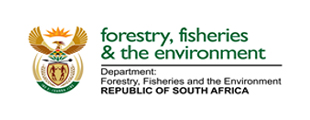 The Department of Forestry, Fisheries and the Environment is pleased to announce the upcoming voyage schedule for the S.A. Agulhas II for the 2025/2026 season. This state-of-the-art polar research and supply vessel will continue its vital role in supporting South Africa’s research stations in Antarctica and the sub-Antarctic islands. Below is the planned itinerary provided by the Department of Forestry Fisheries and the Environment:
The Department of Forestry, Fisheries and the Environment is pleased to announce the upcoming voyage schedule for the S.A. Agulhas II for the 2025/2026 season. This state-of-the-art polar research and supply vessel will continue its vital role in supporting South Africa’s research stations in Antarctica and the sub-Antarctic islands. Below is the planned itinerary provided by the Department of Forestry Fisheries and the Environment:
 DOWNLOAD PDF Voyage Schedule 2025-2026
DOWNLOAD PDF Voyage Schedule 2025-2026
DOWNLOAD PDF Voyage Schedule 2026 – 2027
Please note that these dates are subject to change based on operational requirements and weather conditions. For the most up-to-date information, please refer to the official voyage schedule on the South African National Antarctic Programme (SANAP) website.
SANAP
We look forward to another successful season of exploration and research, furthering our understanding of these remote and vital regions.
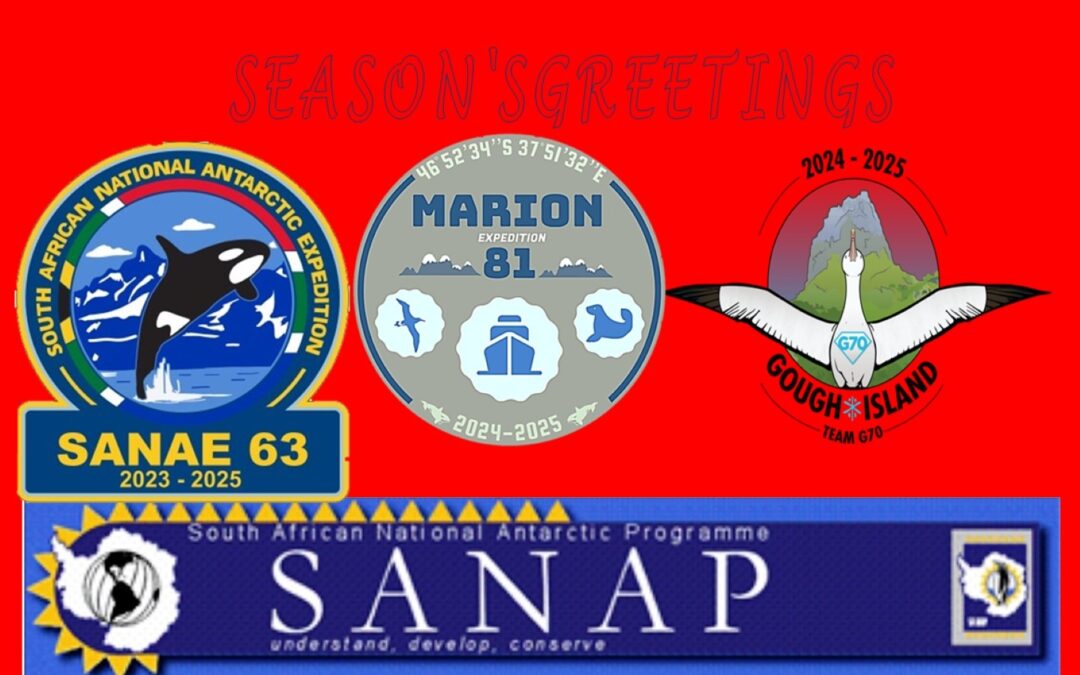
by Ria Olivier | Dec 23, 2024 | Gough Island, Marion Island, Overwintering Team, SANAE
The SANAP overwintering teams have once again demonstrated exceptional dedication and resilience in the face of the Antarctic region conditions. Over the course of the year, our teams have worked tirelessly to support vital research, monitor environmental changes, and uphold South Africa’s contributions to scientific exploration in the polar regions. From the early months of the year preparing for their journey to the end of the overwintering period, these teams have embodied the spirit of adventure, teamwork, and determination.
 We would like to take this moment to extend our deepest thanks to everyone who has supported our overwintering teams. To the families, friends, and loved ones who provide the emotional support necessary for our teams to thrive, your understanding and encouragement are invaluable. To the various stakeholders, including the South African government, research organizations, and our international collaborators, thank you for your continued partnership and belief in the importance of Antarctic research.
We would like to take this moment to extend our deepest thanks to everyone who has supported our overwintering teams. To the families, friends, and loved ones who provide the emotional support necessary for our teams to thrive, your understanding and encouragement are invaluable. To the various stakeholders, including the South African government, research organizations, and our international collaborators, thank you for your continued partnership and belief in the importance of Antarctic research.
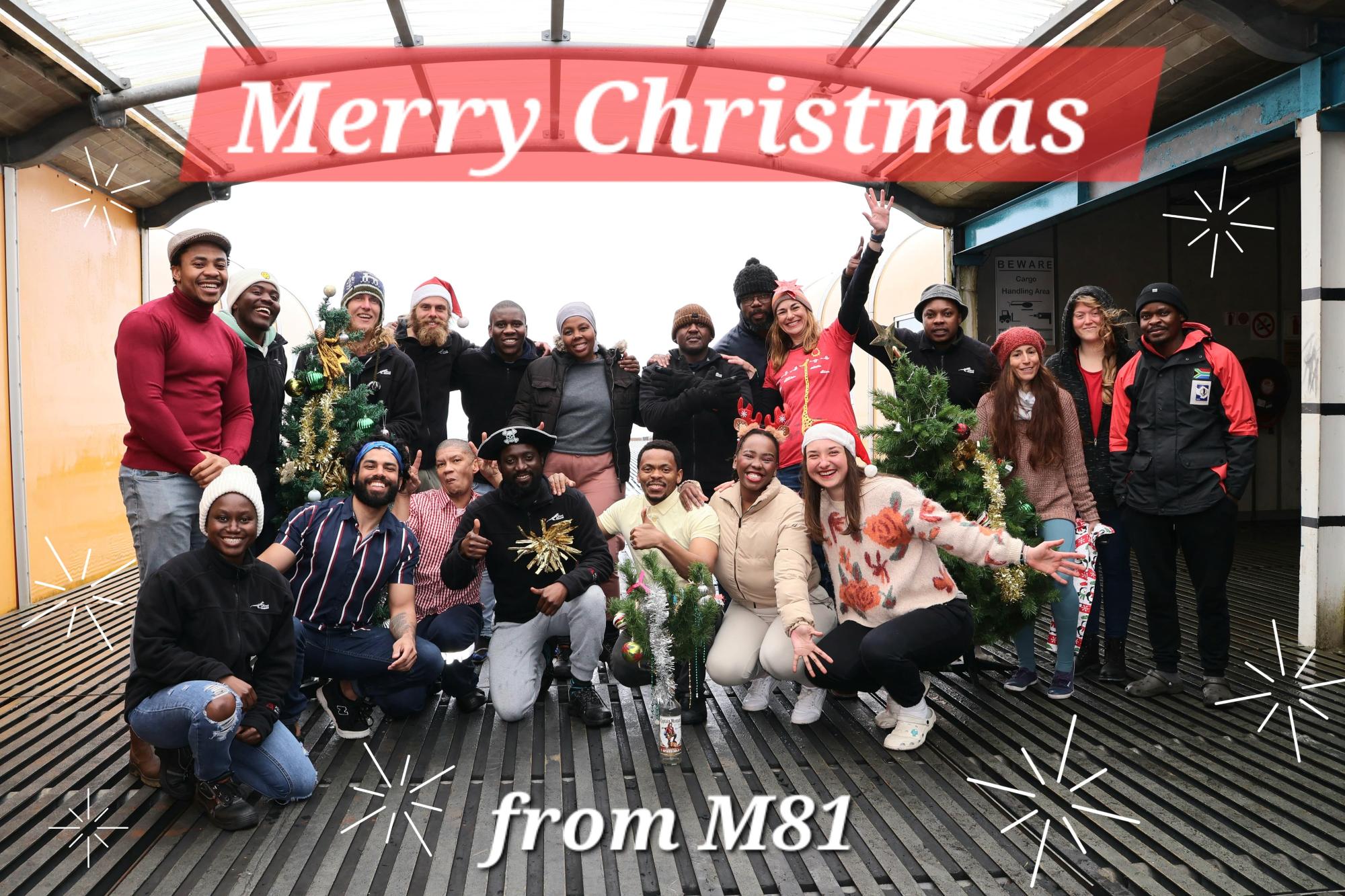 To the overwintering teams themselves, we are incredibly proud of your unwavering dedication. Your perseverance, expertise, and positive spirit inspire us all and are the foundation of the success of the South African National Antarctic Programme. We also want to acknowledge the incredible teamwork that made all of this possible. The spirit of cooperation among SANAP’s overwintering teams is something that continues to inspire us all. Even in isolation, you worked together as a family, relying on each other to overcome the challenges the Antarctic winter throws your way.
To the overwintering teams themselves, we are incredibly proud of your unwavering dedication. Your perseverance, expertise, and positive spirit inspire us all and are the foundation of the success of the South African National Antarctic Programme. We also want to acknowledge the incredible teamwork that made all of this possible. The spirit of cooperation among SANAP’s overwintering teams is something that continues to inspire us all. Even in isolation, you worked together as a family, relying on each other to overcome the challenges the Antarctic winter throws your way.
 To all our overwintering teams, their families, we wish you a peaceful and joyous holiday season. May 2025 bring new discoveries, further achievements, and continued collaboration.
To all our overwintering teams, their families, we wish you a peaceful and joyous holiday season. May 2025 bring new discoveries, further achievements, and continued collaboration.
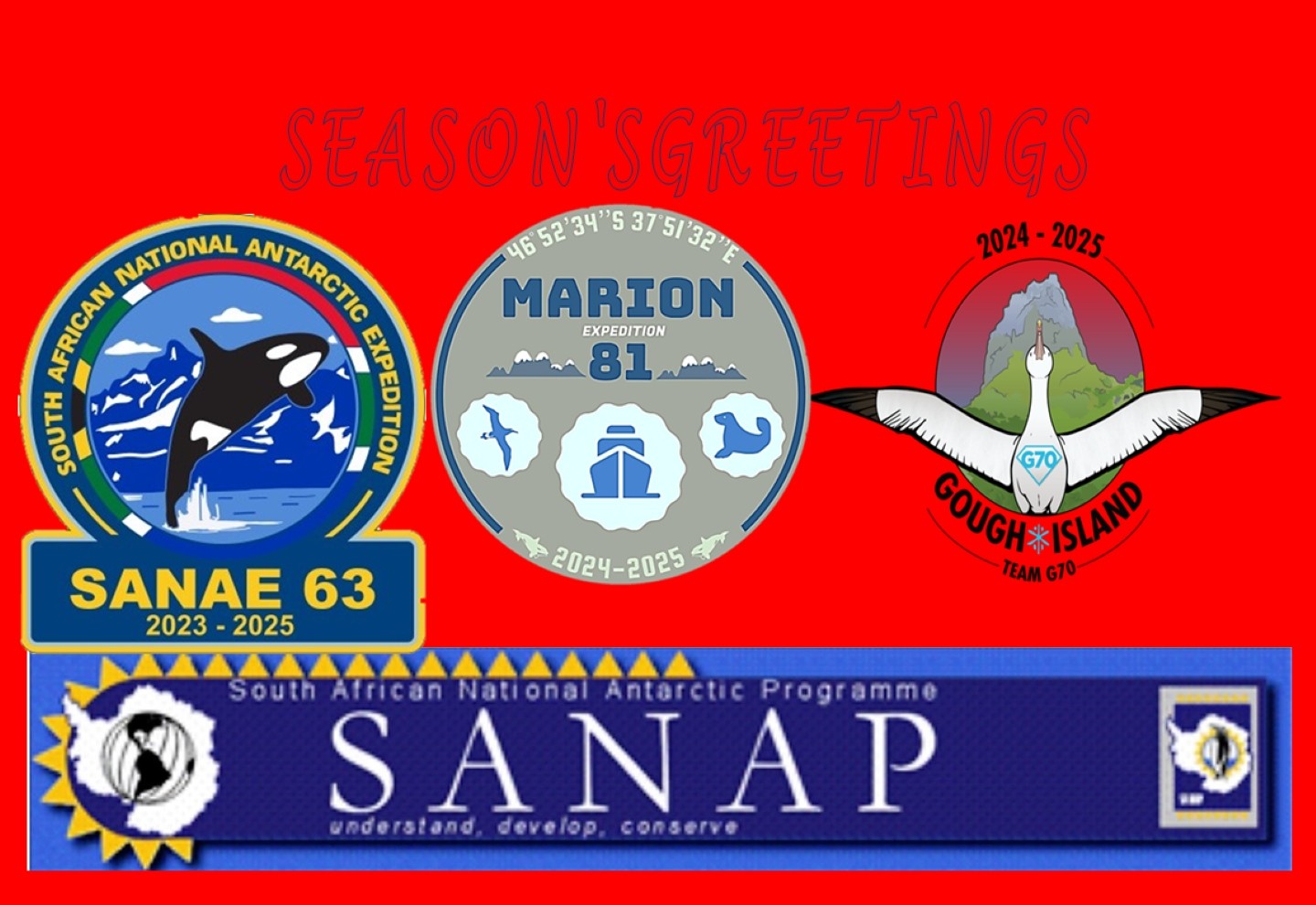 Happy Holidays and a Successful 2025!
Happy Holidays and a Successful 2025!
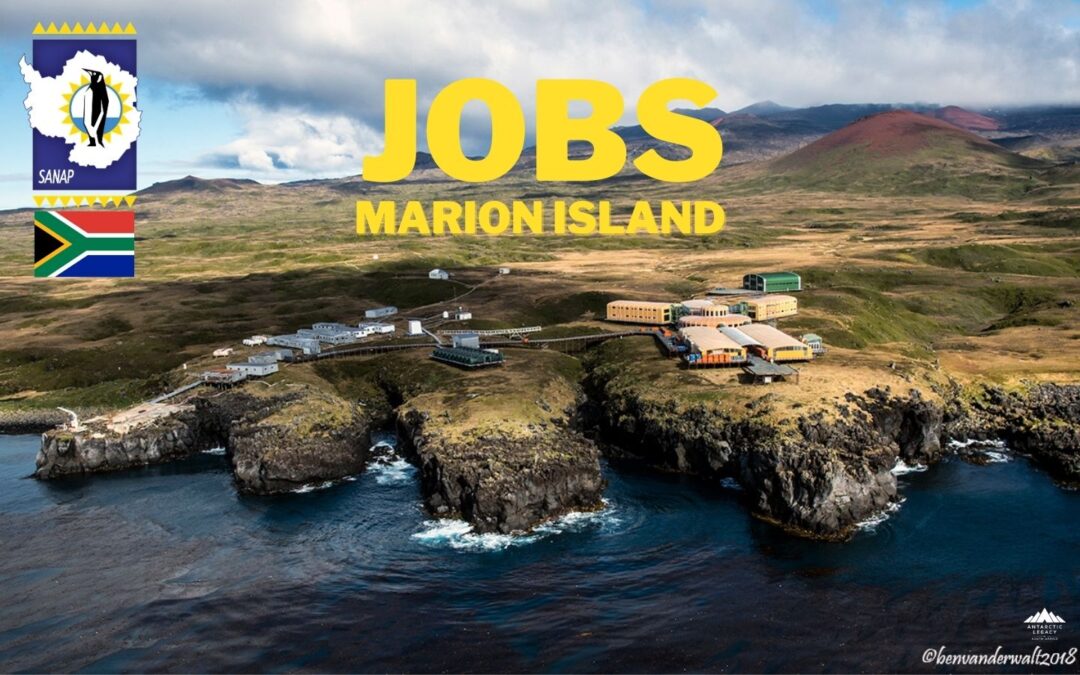
by Ria Olivier | Dec 23, 2024 | Biosecurity, Ecology, Jobs, Marine Protected Area, Marion Island
Vacancy for field researcher on Marion Island
(March 2025 – May 2026)
Mouse impacts on invertebrates and plants
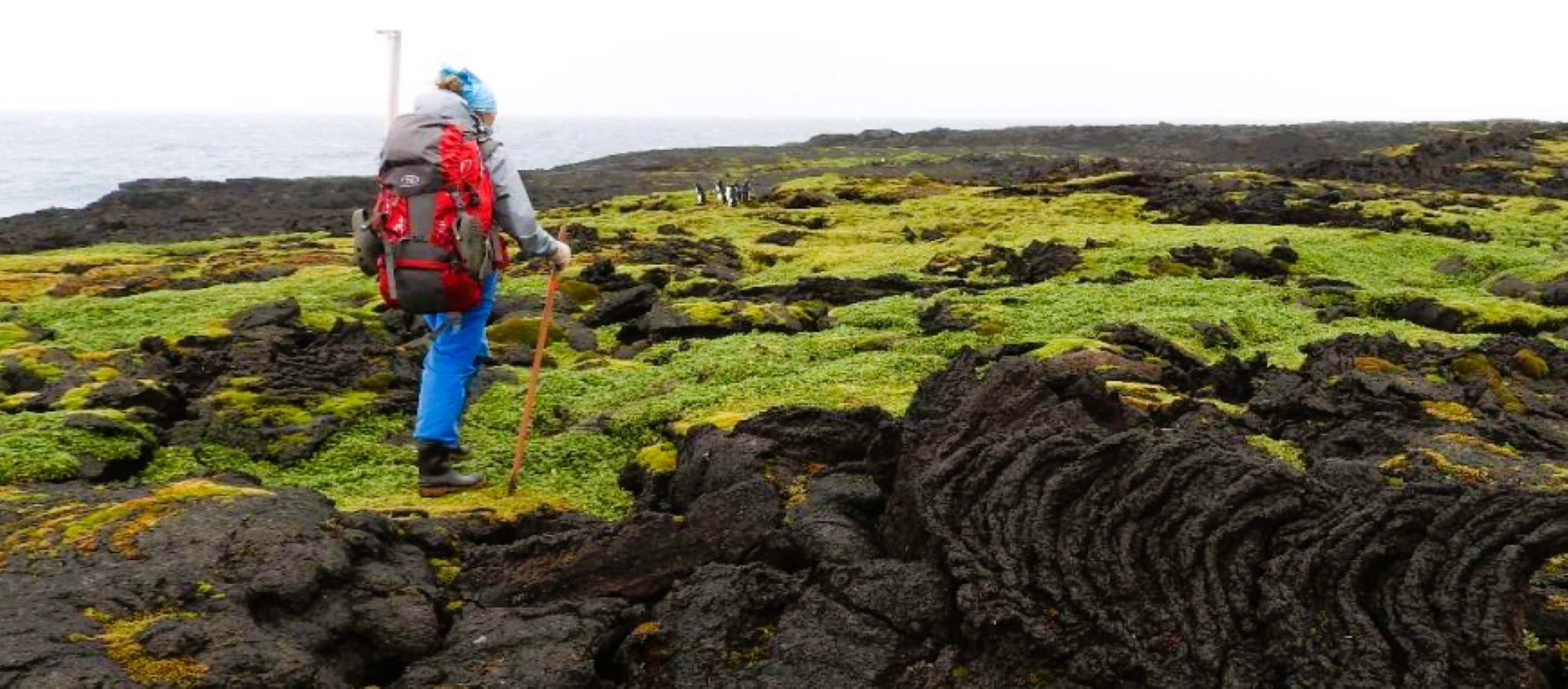 The Department of Plant and Soil Sciences at the University of Pretoria is offering one suitably qualified candidate an opportunity to spend a year on Marion Island to measure various aspects of the impact of the house mouse on the diversity and function of the terrestrial ecosystems of Marion Island. This work will entail collecting baseline data, mostly on invertebrates and plants. (Photo Credit: Michelle Greve)
The Department of Plant and Soil Sciences at the University of Pretoria is offering one suitably qualified candidate an opportunity to spend a year on Marion Island to measure various aspects of the impact of the house mouse on the diversity and function of the terrestrial ecosystems of Marion Island. This work will entail collecting baseline data, mostly on invertebrates and plants. (Photo Credit: Michelle Greve)
Collecting invertebrate community data and identifying invertebrates.
Surveying and monitoring vegetation plots. Measuring plant traits.
Mapping species and events.
Installing, maintaining and downloading data from loggers.
Note that duties may change during the course of the year.
FULL DETAILS
Deadline for applications: 10 January 2025
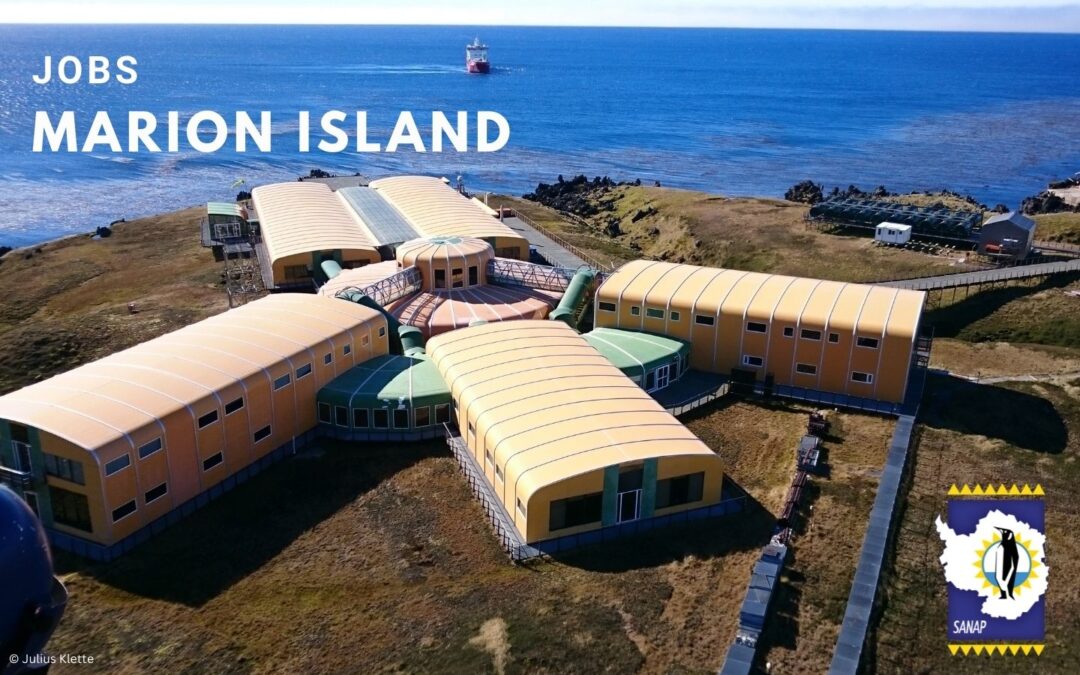
by Ria Olivier | Oct 11, 2024 | Announcement, Jobs, Marion Island, News, Overwintering Team, Research, SANAP, Science, Southern Ocean, Stations, sub-Antarctic, Team member
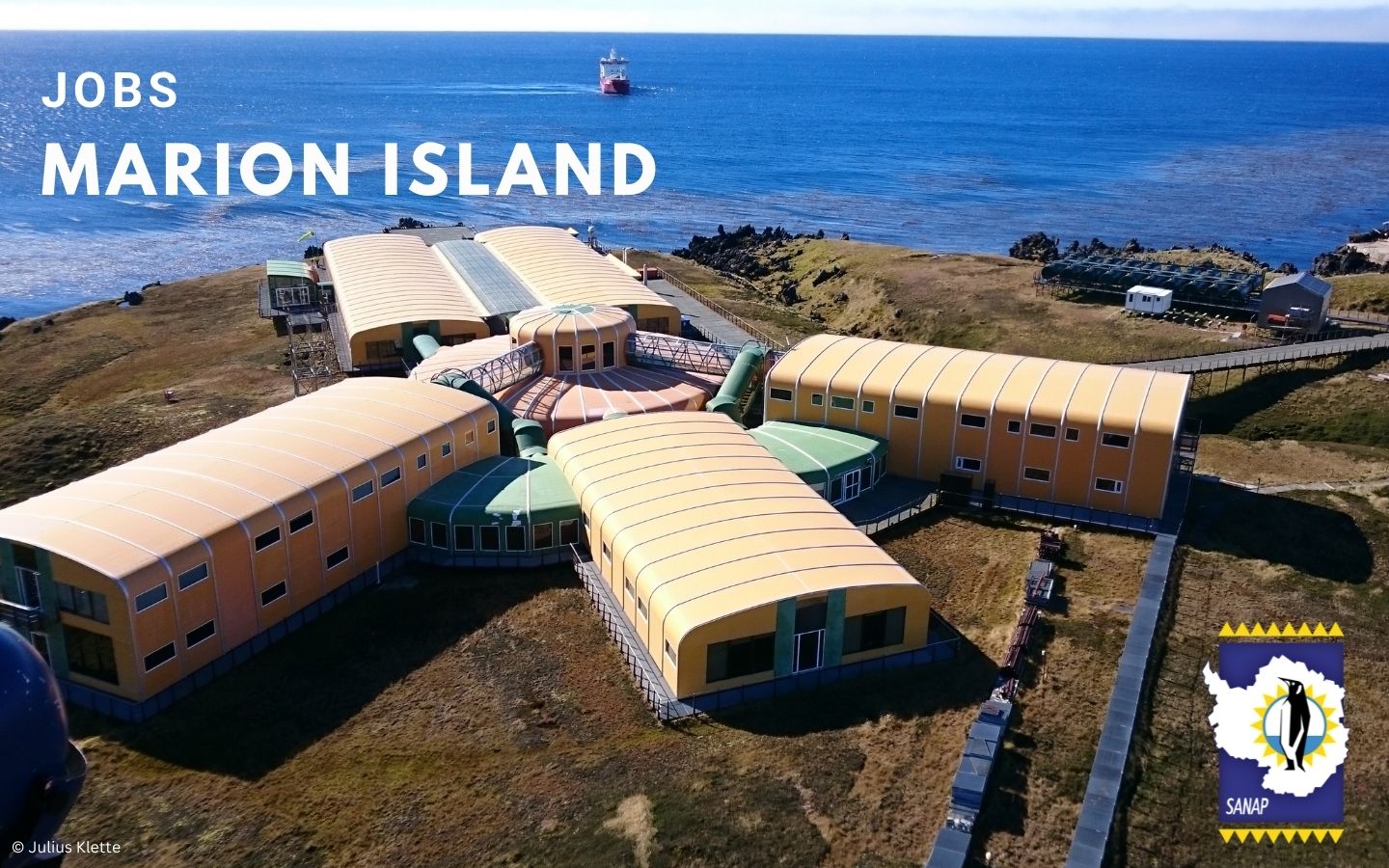
The following positions are available on the sub-Antarctic, Marion Island for the overwintering period (April 2025 to May 2026)
Environmental Officer Assistant Environmental Officer
Communications Engineer Diesel Mechanic Electrical Engineer Medical Orderly
Senior Meteorological Technician Assistant Meteorological Technician
2 X Field Assistants – Sea Birds
Closing Date: 28 OCTOBER
Click here: View all positions

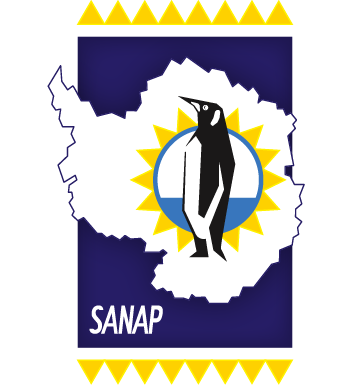


 Each year, on March 23rd, the global community observes World Meteorological Day, commemorating the establishment of the World Meteorological Organization (WMO) in 1950. This day highlights the pivotal role meteorology plays in ensuring the safety and well-being of societies worldwide. In 2025, we focus on the indispensable contributions of meteorologists stationed at the South African National Antarctic Programme’s (SANAP) remote research stations: SANAE IV in Antarctica, Marion Island, and Gough Island.
Each year, on March 23rd, the global community observes World Meteorological Day, commemorating the establishment of the World Meteorological Organization (WMO) in 1950. This day highlights the pivotal role meteorology plays in ensuring the safety and well-being of societies worldwide. In 2025, we focus on the indispensable contributions of meteorologists stationed at the South African National Antarctic Programme’s (SANAP) remote research stations: SANAE IV in Antarctica, Marion Island, and Gough Island. On this World Meteorological Day, we extend our gratitude to the meteorologists of SANAP’s overwintering teams. Their unwavering commitment and resilience in some of the most challenging environments ensure that we continue to deepen our understanding of Earth’s atmospheric processes, ultimately contributing to the safety and well-being of societies worldwide.
On this World Meteorological Day, we extend our gratitude to the meteorologists of SANAP’s overwintering teams. Their unwavering commitment and resilience in some of the most challenging environments ensure that we continue to deepen our understanding of Earth’s atmospheric processes, ultimately contributing to the safety and well-being of societies worldwide. SANAE IV (South African National Antarctic Expedition IV): Located at 71°S, 2°W in Antarctica, SANAE IV. Meteorological observations are conducted year-round, providing critical data on atmospheric conditions in this remote region.
SANAE IV (South African National Antarctic Expedition IV): Located at 71°S, 2°W in Antarctica, SANAE IV. Meteorological observations are conducted year-round, providing critical data on atmospheric conditions in this remote region.

 The Department of Forestry, Fisheries and the Environment is pleased to announce the upcoming voyage schedule for the S.A. Agulhas II for the 2025/2026 season. This state-of-the-art polar research and supply vessel will continue its vital role in supporting South Africa’s research stations in Antarctica and the sub-Antarctic islands. Below is the planned itinerary provided by the Department of Forestry Fisheries and the Environment:
The Department of Forestry, Fisheries and the Environment is pleased to announce the upcoming voyage schedule for the S.A. Agulhas II for the 2025/2026 season. This state-of-the-art polar research and supply vessel will continue its vital role in supporting South Africa’s research stations in Antarctica and the sub-Antarctic islands. Below is the planned itinerary provided by the Department of Forestry Fisheries and the Environment:

 We would like to take this moment to extend our deepest thanks to everyone who has supported our overwintering teams. To the families, friends, and loved ones who provide the emotional support necessary for our teams to thrive, your understanding and encouragement are invaluable. To the various stakeholders, including the South African government, research organizations, and our international collaborators, thank you for your continued partnership and belief in the importance of Antarctic research.
We would like to take this moment to extend our deepest thanks to everyone who has supported our overwintering teams. To the families, friends, and loved ones who provide the emotional support necessary for our teams to thrive, your understanding and encouragement are invaluable. To the various stakeholders, including the South African government, research organizations, and our international collaborators, thank you for your continued partnership and belief in the importance of Antarctic research. To the overwintering teams themselves, we are incredibly proud of your unwavering dedication. Your perseverance, expertise, and positive spirit inspire us all and are the foundation of the success of the South African National Antarctic Programme. We also want to acknowledge the incredible teamwork that made all of this possible. The spirit of cooperation among SANAP’s overwintering teams is something that continues to inspire us all. Even in isolation, you worked together as a family, relying on each other to overcome the challenges the Antarctic winter throws your way.
To the overwintering teams themselves, we are incredibly proud of your unwavering dedication. Your perseverance, expertise, and positive spirit inspire us all and are the foundation of the success of the South African National Antarctic Programme. We also want to acknowledge the incredible teamwork that made all of this possible. The spirit of cooperation among SANAP’s overwintering teams is something that continues to inspire us all. Even in isolation, you worked together as a family, relying on each other to overcome the challenges the Antarctic winter throws your way. To all our overwintering teams, their families, we wish you a peaceful and joyous holiday season. May 2025 bring new discoveries, further achievements, and continued collaboration.
To all our overwintering teams, their families, we wish you a peaceful and joyous holiday season. May 2025 bring new discoveries, further achievements, and continued collaboration. Happy Holidays and a Successful 2025!
Happy Holidays and a Successful 2025!
 The Department of Plant and Soil Sciences at the University of Pretoria is offering one suitably qualified candidate an opportunity to spend a year on Marion Island to measure various aspects of the impact of the house mouse on the diversity and function of the terrestrial ecosystems of Marion Island. This work will entail collecting baseline data, mostly on invertebrates and plants. (Photo Credit: Michelle Greve)
The Department of Plant and Soil Sciences at the University of Pretoria is offering one suitably qualified candidate an opportunity to spend a year on Marion Island to measure various aspects of the impact of the house mouse on the diversity and function of the terrestrial ecosystems of Marion Island. This work will entail collecting baseline data, mostly on invertebrates and plants. (Photo Credit: Michelle Greve)


